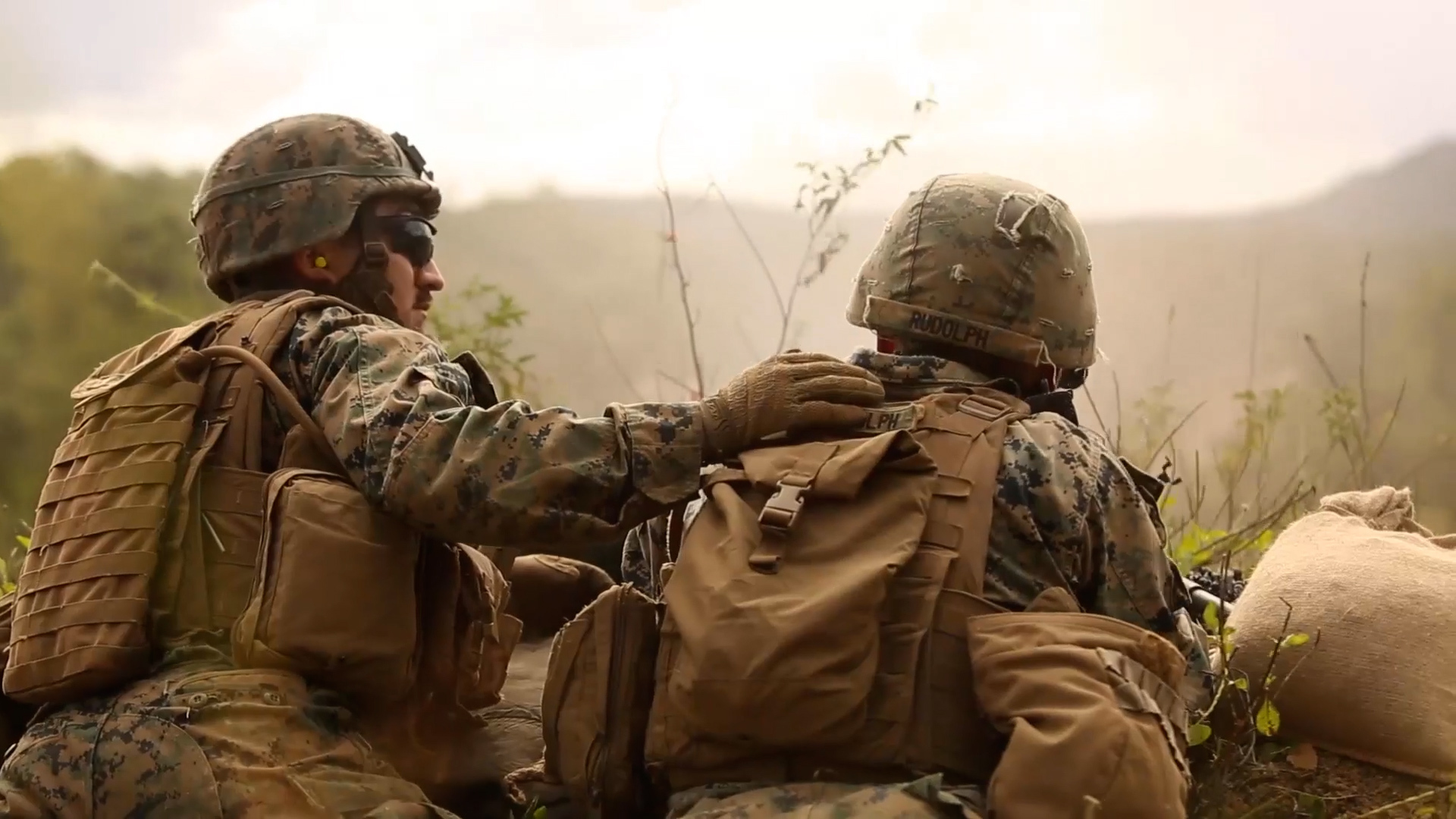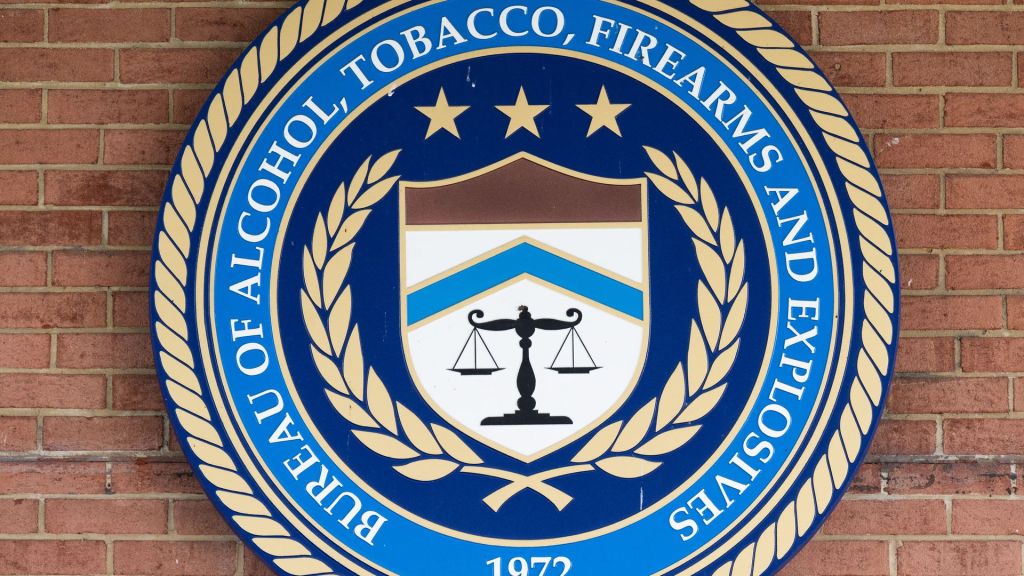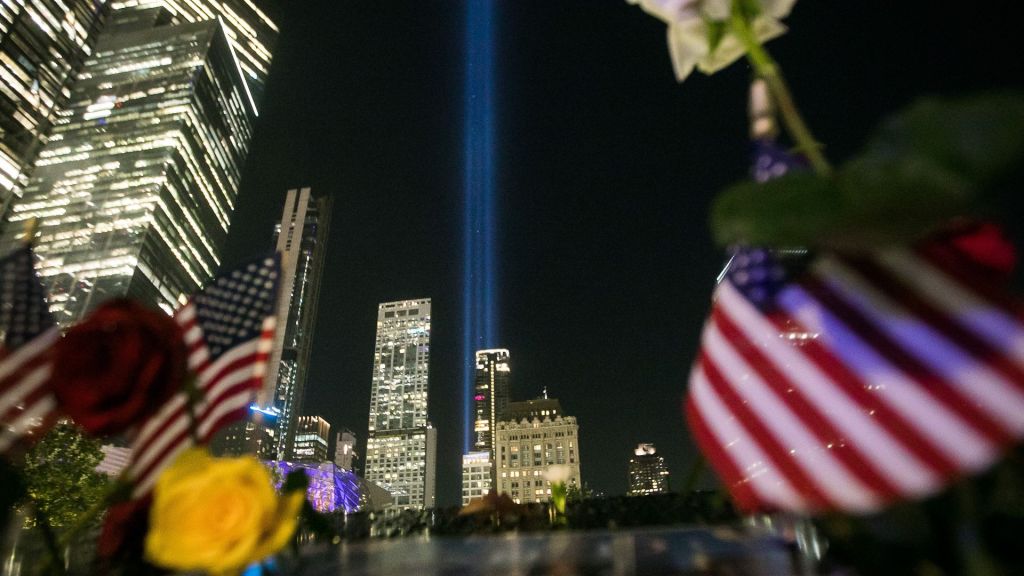
[RYAN ROBERTSON]
THIS WEEK, WE’RE TAKING A LOOK AT SOMETHING CALLED MORAL INJURY. IT’S BEEN AROUND FOR AS LONG AS PEOPLE HAVE ENGAGED IN COMBAT. EXAMPLES CAN BE FOUND IN THE EXPLOITS OF GILGAMESH, AS WELL AS THE ILIAD AND THE ODYSSEY.
MORE RECENTLY WE SAW AN ONSCREEN EXAMPLE OF SOMEONE WRESTLING WITH MORAL INJURY IN CILLIAN (Kill-ian) MURPHY’S PORTRAYAL OF J. ROBERT OPPENHEIMER.
[FROM OPPENHEIMER]
BYRNES: Dr Oppenheimer if what you say about the Soviets is true, we have to build up Los Alamos, not shut it down.
OPPENHEIMER: Mr President, I feel that I have blood on my hands.
TRUMAN: You think anyone in Hiroshima or Nagasaki gives a shit who built the bomb? They care who dropped it. I did. Hiroshima isn’t about you.
(meeting awkwardly concludes)
TRUMAN: Don’t let that crybaby back in here.
(The door of the Oval Office closes)
[RYAN ROBERTSON]
IN THE 1940s DR. OPPENHEIMER DID WHAT HIS COUNTRY ASKED HIM TO DO. ONLY ONCE HIS WORK WAS ACTUALLY PUT TO USE, DID HE BEGIN TO FEEL THE WEIGHT OF THE OUTCOME OF HIS ACTIONS.
IT’S ONLY RELATIVELY RECENTLY THE TERM MORAL INJURY WAS GIVEN A NAME, AND STARTED TO BE UNDERSTOOD.
PART OF THE REASON FOR THAT IS BECAUSE LESS THAN 15% OF ENLISTED MILITARY PERSONNEL EVER SEE COMBAT. THAT’S ACCORDING TO RESEARCH FROM THE NATIONAL PERSONNEL RECORDS CENTER. THE PERCENTAGE OF COMMISSIONED OFFICERS TO SEE COMBAT IS EVEN SMALLER. BUT FOR THOSE THAT DO IT IS OFTEN A LIFE-ALTERING EVENT.
{TRANSITION STINGER}
[RYAN ROBERTSON]
WHILE WAR’S PHYSICAL WOUNDS ARE EASIER TO SEE AND TREAT, IT’S THE TRAUMA THAT CAN’T BE SEEN, OFTEN POSING THE BIGGEST CHALLENGE TO THOSE AFFECTED AND THOSE CHARGED WITH CARING FOR THEM.
WHILE MOST OF US ARE FAMILIAR WITH THE TERM POST-TRAUMATIC STRESS DISORDER, OR P-T-S-D, FEWER KNOW ABOUT THE DIAGNOSIS OF MORAL INJURY.
KARI THYNE (Tine), AN AIR FORCE VETERAN AND ASSOCIATE PROFESSOR OF INTERDISCIPLINARY STUDIES AT THE JOINT SPECIAL OPERATIONS UNIVERSITY DEFINES MORAL INJURY AS
“The suffering when things go wrong, and stakes are high.” These are invisible wounds but, nonetheless, harm from something seen or done or from something done to us. The effects challenge trust in others, ourselves, or both. Moral injuries result in emotions such as anger, guilt, shame, self-blame, and sorrow. The effects can remain dormant for weeks, months, years, or even decades; they will not remain dormant forever.
THE TOPIC IS GAINING TRACTION WITH MENTAL HEALTH CARE PROVIDERS AND EVEN INSIDE THE SPECIAL FORCES COMMUNITY. AT THIS YEAR’S SOF WEEK IN TAMPA, A PANEL OF FOUR EXPERTS SPOKE ON THE SUBJECT AND HOW IT’S BEING ADDRESSED..
[KARI THYNE]
“So what are we doing institutionally to prepare SOF operators and those who support them to not only survive in this environment but to thrive? Not really enough because I can’t articulate a robust program that we have, cobbled together to address the problem. So that in itself is a problem, we need an awareness of the complexity of the sof environment.”
[RYAN ROBERTSON]
DESPITE BEING SOME OF THE MOST WELL-TRAINED AND SKILLED SERVICE MEMBERS IN THE WORLD, THERE ARE INEVITABLY THINGS THAT AREN’T ACCOUNTED FOR. DOCTOR THYNE (Tine) SAYS, LIKE OPERATING A PIECE OF EQUIPMENT, IT TAKES TRAINING.
[KARI THYNE]
“You have to teach people what they don’t know. Or they can be excused for not knowing what they need to know when the time comes. Because you never took the time to teach them.”
[RYAN ROBERTSON]
PART OF THE PROBLEM CAN BE SEEN IN A VENN DIAGRAM OF P-T-S-D AND MORAL INJURY, SHOWING HOW THE SYMPTOMS OF ONE OR THE OTHER CAN OVERLAP. DR. ERIN MCFEE, A PROFESSOR OF PRACTICE AT THE PERRY CENTER FOR HEMISPHERIC DEFENSE STUDIES, SAYS THAT CAN MAKE DIAGNOSING AN ISSUE EVEN MORE DIFFICULT.
[ERIN MCFEE]
“It’s not a binary Oh, wait, yes, I have moral injury or No, I don’t have moral injury, it’s very difficult to sort of suss out, you know, what isn’t isn’t. And that confusion can sort of add to the distressing nature of it. And that is also part of the phenomenon.”
[RYAN ROBERTSON]
OF COURSE, A LARGE PART OF THE MORAL INJURY PROBLEM CAN BE THE VERY NATURE OF THE WORK DONE BY SPECIAL OPERATORS.
[KARI THYNE]
“Moral codes, a lot of times, they just seem like an unnecessary burden. They slow us down, they get in the way. And in worst case scenario, they could put us in harm’s way and cost us our lives, if we’re paying attention to what we should or shouldn’t be doing when we need to be acting. And so that is part of the complexity of the challenges facing SOF operators and those who support them”
[RYAN ROBERTSON]
IN A PIECE FOR BRAIN LINE, AN ADVOCACY AND INFORMATION RESOURCE, ARMY VETERAN TOM VOSS DESCRIBES HIS EXPERIENCE WITH MORAL INJURY.
[TOM VOSS]
“You don’t really understand it while you’re in the dangerous situation because you’re in fight or flight, right? When you come back from experience of war or combat, you start to think where we justified in our actions that participate in person can be forgiven or my community accept me if they’ve ever find out what I participated in. So these are the questions that are associated with moral injury. Which is grief, guilt, shame, real core wounds to the soul..”
[RYAN ROBERTSON]
SO WHERE DOES CHANGE BEGIN? DR THYNE (Tine) SAYS LEADERSHIP IS A KEY COMPONENT. WHETHER IT’S IN TRAINING, OR IN THE ACTUAL BATTLESPACE.
[KARI THYNE]
“Help people understand that they have to protect what is good about themselves, because if they don’t protect what’s good about themselves, they may find it disappearing. People can take it from them. So understand, help them understand that aspect of it as well.”
[RYAN ROBERTSON]
ANOTHER ELEMENT, ACCORDING TO DR. JOHN EDGAR CATERSON, IS UNDERSTANDING AN INDIVIDUAL’S OWNERSHIP OF THEIR EXPERIENCES.
[JOHN EDGAR CATERSON]
“Dr. Mark Charles Egersund, who was one of the authors in the monograph, and it’d be in the next book, he basically is probably one of the leading virtual ethicist in the world. But he said, individual perception is key, you cannot tell an individual how they feel or what the traumatic experience means to them. It is their experience. And they are the own expert of their own individual soul root wounds, invisible wounds, whatever label you want to put on it, but they are the experts of that. And then we didn’t put in there. But the next paragraph that basically says they will live with this the remainder of their days, it’s just what it comes down to.”
[RYAN ROBERTSON]
UNFORTUNATELY FOR ALL THAT IS KNOWN, OR STARTING TO BE BE UNDERSTOOD, ABOUT MORAL INJURY, SUICIDES AMONG THOSE THAT HAVE SERVED, CONTINUE AT ALARMING RATES. DEPENDING ON THE FACTORS CONSIDERED, ANNUAL NUMBERS OF VETERANS COMMITTING SUICIDE CAN VARY FROM 17 TO 44 LIVES LOST EVERY DAY. ACCORDING TO THE NATIONAL INSTITUTES FOR HEALTH, PEER MENTORSHIP IS ONE AVENUE FOR PREVENTION.
[KARI THYNE]
“So creating actually more intentional pathways for population groups that might not have access to mentors to get access to those mentors. And maybe then just like being a bit hands off and letting it emerge organically, only so much of this could be structured in a productive manner.”
[RYAN ROBERTSON]
ULTIMATELY THERE ARE NO EASY ANSWERS WHEN IT COMES TO TREATING MORAL INJURY, BUT EXPERTS TELL US IT STARTS WITH INFORMATION AND ACCESS TO RESOURCES. IF YOU, OR SOMEONE YOU KNOW, IS STRUGGLING WITH MORAL INJURY, YOU CAN FIND LINKS TO THE RESOURCES ON YOUR SCREEN IN THE STORY BELOW.











